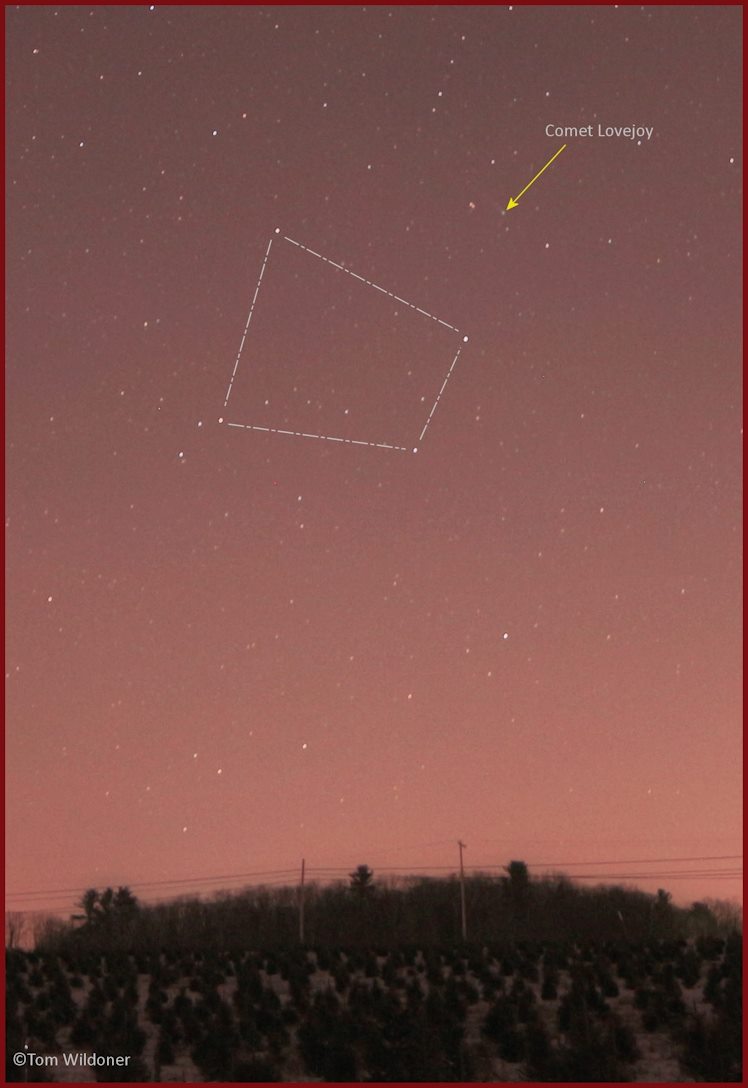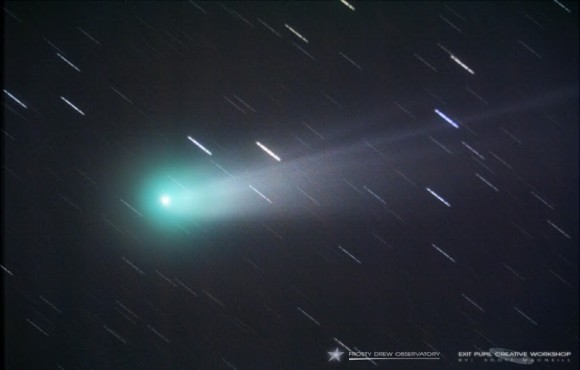Want to see a comet? Consider a comet that has lurked quietly – but visibly – in Earth’s late night and morning skies throughout November and early December. C/2013 R1 (Lovejoy) became visible to the unaided eye on November 1. In the next several days – say, on the mornings of December 13 and 14, which also happen to be the peak mornings of the Geminid meteor shower – you can spot Comet Lovejoy near a famous sky asterism, or recognizable pattern, called The Keystone in Hercules. You will need a dark sky for this, and binoculars to scan for the comet. Sky observer and photographer Tom Wildoner – our friend on both Facebook and Google+ – has this advice:
In the northern hemisphere first find the Keystone in the constellation Hercules. Comet Lovejoy will be right next to the Keystone for the next several days.
Another EarthSky friend on Facebook, Beth Katz, added that you’re going to try to observe the comet just before dawn:
Be out there earlier than you expect is needed. I missed it this morning because the sky was too bright.

In late November, Comet Lovejoy was near the bottom of the handle of the Big Dipper. If you can find the Big Dipper, you can use it as a starting point to glimpsing Comet Lovejoy throughout December. The comet is visible in the wee hours now, but the charts below show the comet closer to dawn.
Face northeast before dawn to find the Big Dipper. Then follow the arc in the Big Dipper’s handle to the orange star Arcturus.
Once you find Arcturus, you can use that bright star as your guide to Lovejoy. The photos and charts below show how to do it.
Step 1. Use the Big Dipper to find the star Arcturus.

Step 2. Notice the whereabouts of Comet Lovejoy in early December with respect to Arcturus.

Step 3. Keep watching the predawn sky to follow Comet Lovejoy during December.

Scott MacNeill at Frosty Drew Observatory in Rhode Island captured the beautiful photo below on November 30. At that time, he wrote on EarthSky’s Google+ page:
Comet Lovejoy was easily naked eye visible and is in the constellation Bootes.

Comet Lovejoy made its closest approach to Earth on November 19 at a distance of nearly 37 million miles (59 million km). It will be closest to the sun on December 25. Many have captured Comet Lovejoy’s photo.
By the way, by all accounts, Comet ISON has faded and disintegrated. It is now thought to be a traveling debris field, not at all likely to become visible in earthly skies.
Bottom line: Okay, no Comet ISON. I guess I can accept that. And, before you give up entirely on these cosmic visitors, consider another comet that has lurked quietly – but visibly – in Earth’s late night and morning skies this past month. It’s Comet Lovejoy, and you can see it with your eye alone, if you have a dark-enough sky. How to see Comet Lovejoy in December 2013 … in this post.











